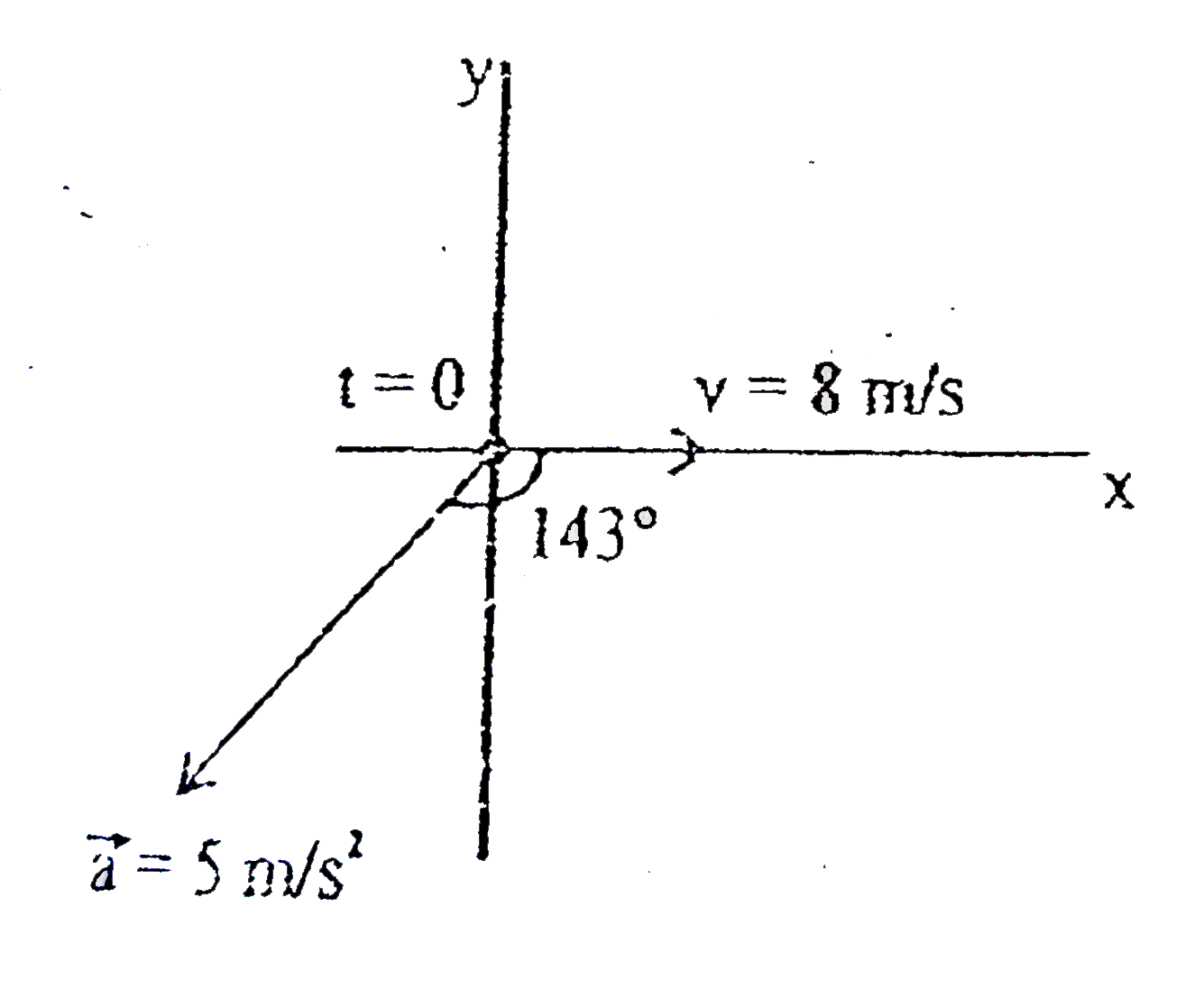An object is moving in the x-y plane with the position as a function of time given by →r=x(t)ˆi+y(t)ˆj. Point O is at x=0,y=0 . The object is definitely moving towards O when
vx>0,vy>0
vx<0,vy<0
xvx+yvy<0
xvx+yvy>0
The correct Answer is:C
To determine when an object moving in the x-y plane is definitely moving towards the origin (point O at coordinates (0,0)), we can analyze the relationship between the position vector and the velocity vector of the object.
1. Define the Position Vector:
The position vector of the object is given by:
→r=x(t)^i+y(t)^j
where x(t) and y(t) are the x and y coordinates as functions of time.
2. Define the Velocity Vector:
The velocity vector →v of the object can be derived by differentiating the position vector with respect to time:
→v=d→rdt=dxdt^i+dydt^j=vx^i+vy^j
where vx=dxdt and vy=dydt.
3. Condition for Moving Towards the Origin:
For the object to be moving towards the origin, the velocity vector must have a component that points in the direction of the negative position vector. This can be expressed mathematically using the dot product:
→r⋅→v<0
This means that the angle between the position vector and the velocity vector is greater than 90 degrees.
4. Calculate the Dot Product:
The dot product of the position vector and the velocity vector is:
→r⋅→v=(x(t)^i+y(t)^j)⋅(vx^i+vy^j)=x(t)vx+y(t)vy
5. Set Up the Inequality:
To satisfy the condition for moving towards the origin, we set up the inequality:
x(t)vx+y(t)vy<0
6. Conclusion:
The object is definitely moving towards the origin when the expression x(t)vx+y(t)vy is less than zero.
Final Answer:
The object is moving towards point O (0,0) when:
x(t)vx+y(t)vy<0
The position vector of the object is given by:
→r=x(t)^i+y(t)^j
where x(t) and y(t) are the x and y coordinates as functions of time.
The velocity vector →v of the object can be derived by differentiating the position vector with respect to time:
→v=d→rdt=dxdt^i+dydt^j=vx^i+vy^j
where vx=dxdt and vy=dydt.
For the object to be moving towards the origin, the velocity vector must have a component that points in the direction of the negative position vector. This can be expressed mathematically using the dot product:
→r⋅→v<0
This means that the angle between the position vector and the velocity vector is greater than 90 degrees.
The dot product of the position vector and the velocity vector is:
→r⋅→v=(x(t)^i+y(t)^j)⋅(vx^i+vy^j)=x(t)vx+y(t)vy
To satisfy the condition for moving towards the origin, we set up the inequality:
x(t)vx+y(t)vy<0
The object is definitely moving towards the origin when the expression x(t)vx+y(t)vy is less than zero.
The object is moving towards point O (0,0) when:
x(t)vx+y(t)vy<0
Topper's Solved these Questions
- BOOK - CENGAGE PHYSICS ENGLISHCHAPTER - MISCELLANEOUS KINEMATICSEXERCISE - Multiple Correct Answer Type26videos
MISCELLANEOUS KINEMATICS
- BOOK - CENGAGE PHYSICS ENGLISHCHAPTER - MISCELLANEOUS KINEMATICSEXERCISE - Linked Comprehension Type35videos
MISCELLANEOUS KINEMATICS
- BOOK - CENGAGE PHYSICS ENGLISHCHAPTER - LINEAR AND ANGULAR SIMPLE HARMONIC MOTIONEXERCISE - Single correct anwer type14videos
LINEAR AND ANGULAR SIMPLE HARMONIC MOTION
- BOOK - CENGAGE PHYSICS ENGLISHCHAPTER - MISCELLANEOUS VOLUME 2EXERCISE - INTEGER_TYPE10videos
MISCELLANEOUS VOLUME 2
Similar Questions
Knowledge Check
- Question 1 - Select One
A particle moves in the x-y plane with velocity vx=8t−2andvy=2. If it passes through the point x =14 and y = 4 at t =2s the equation of the path is
A1. x=y3−y2+2B2. x=y2−y+2C3. x=y2−3y+2D4. x=y3−2y2+2
An object is moving in x−y plane its velocity and acceleration at t=0 are represented in figure.

After how much time object crosses the y−axis:-View SolutionA particle moves in xy-plane. The position vector of particle at any time is →r={(2t)ˆi+(2t2)ˆj}m. The rate of change of 0 at time t=2 second. ( where 0 is the angle which its velocity vector makes with positive x-axis) is :
View SolutionAn object moves from position (6,8) to (12,10) in the x-y plane. Magnitude and direction of displacement is
View SolutionA particle moves in the x−y plane , accoding to the equation, r=(ˆi+2ˆj)Acosωt. The motion of the particle is
View SolutionAn object is moving towards a stationary plane mirror with a speed of 2 m/s. Velocity of the image w.r.t. the object is
View SolutionA particle moves in the x-y plane with velocity vx=8t−2andvy=2. If it passes through the point x=14andy=4att=2s, the equation of the path is
View SolutionA particle moves in the x-y plane with velocity vx=8t−2andvy=2. If it passes through the point x=14andy=4 at t = 2 s, the equation of the path is
View Solution


